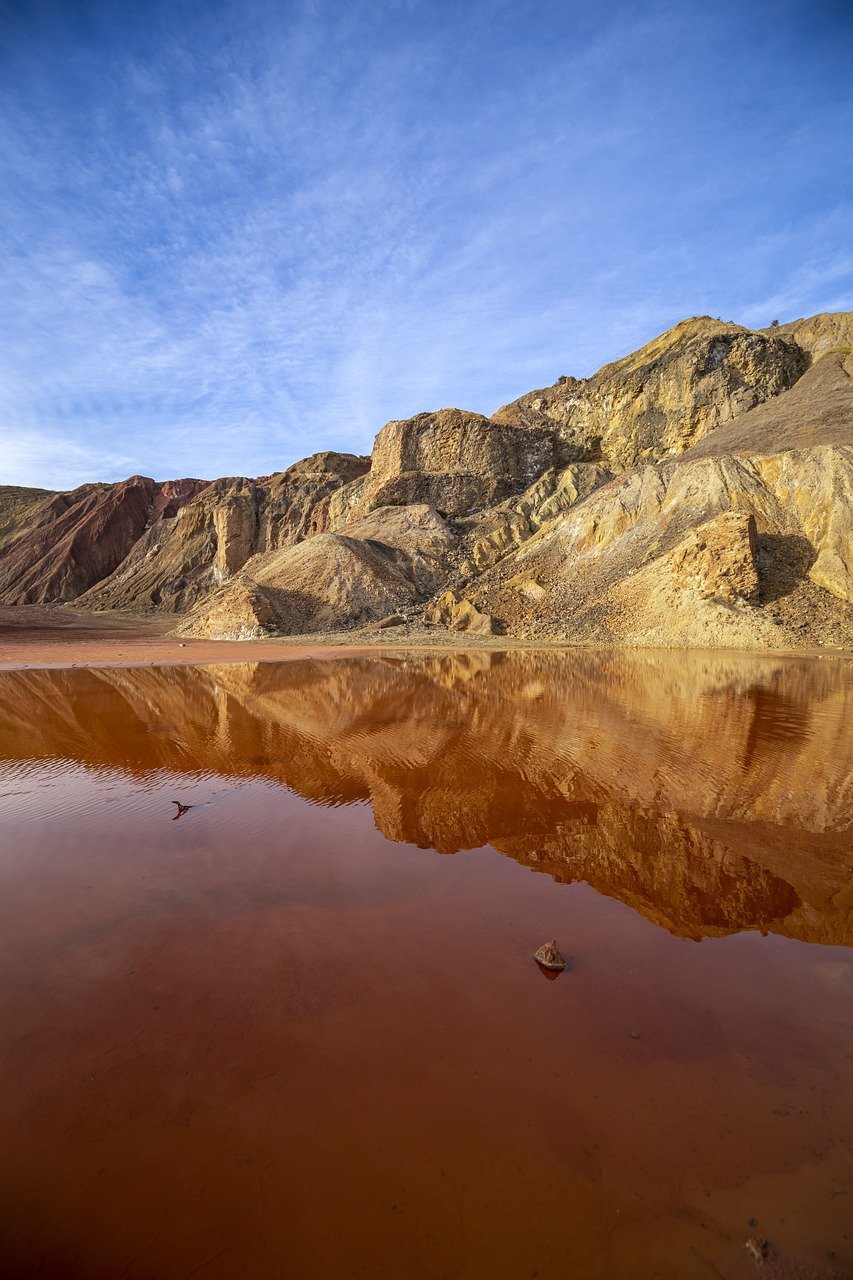The mining of metal ores generates both liquid and solid wastes, which are increasingly important to manage. Wastes of mining activities are estimated to be one of the largest waste streams in the world. These wastes are divided into mining waste (such as waste rocks, mine waters, mine drainage sludges), processing waste and metallurgical wastes (bauxite red mud, historical base metal smelting slags, phosphor-gypsum). The wastes most frequently produced by processing plants result from mineral extraction, physical and chemical processing of metal ores, physical and chemical processing of minerals other than metal ores, drilling muds, and other drilling wastes.
Mining wastewater may be highly acidic and high in suspended solids. It’s common to find contamination with organic compounds, metals, heavy metals, and metalloids like arsenic, iron, and manganese. In general, mining wastewater may be highly acidic and high in suspended solids. As mining wastewater can be highly variable, so are treatment strategies, which generally include several different stages and technologies. Existing waste management technologies are still not efficient enough and/or require large financial outlays, therefore these solid, flotation wastewater or slurry are most often deposited at or near the mine, and since they usually contain high concentrations of elements and compounds, they can harm the environment. This can happen not only in the vicinity of the processing plant but also over a much larger area, e.g., contamination of rivers streams, and lakes, the devastation of the landscape. It seems there is a pressing need to develop and apply solutions that are not only environmentally friendly and efficient but also economically viable
Properly managing mining waste will ensure the long-term stability of disposal facilities. It will prevent or minimize water and soil pollution arising from acid or alkaline drainage and the leaching of heavy metals. Zero liquid discharge (ZLD), a wastewater management strategy that eliminates liquid waste and, maximizes water usage efficiency, has attracted renewed interest

worldwide in recent years. The focus of ZLD is to reduce economic? wastewater and produce clean water that is suitable for reuse as well as extracting useful minerals from the wastewater. ZLD technology includes pre-treatment and evaporation of the wastewater in a usually a Multi Effect Evaporator (MEE) until the dissolved solids precipitate as crystals. These crystals are removed and dewatered with a filter press/centrifuge. The water vapor from evaporation is condensed and returned to the process. Multiple Effect Evaporator (MEE) is a system consisting of a sequence of heat exchangers – VLSs (vapor-liquid separators) to achieve evaporation and obtain desired concentration as output by using an efficient amount of heat source such as steam or hot water to evaporate water.
Fouling is a major issue in heat exchangers of an MEE plant as it affects both capital and operating costs of heat exchangers. The presence of fouling represents a resistance to the fluid flow and heat transfer and therefore increase the pressure drop and reduces the efficiency of the heat exchanger which in turn decreases the efficiency of the ZLD process significantly.
Taprogge offers continuous cleaning solutions for either new or revamped heat exchangers in ZLD plants. A fluidized bed of solid particles is used at the tube side of the self-cleaning heat exchangers where the fouling liquid flows through. Taprogge’s designs operate up to zero-fouling.
Contact us for the feasibility report and further discussion.

